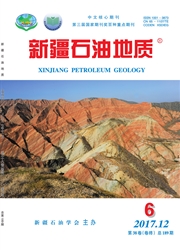

 中文摘要:
中文摘要:
剖析了藏北芜塘盆地的胜利河油页岩剖面和比洛错油页岩剖面,探讨了这两套海相油页岩的沉积环境。依据Sr同位素的变化特征,并结合剖面的岩性组合特征、自生矿物组合、沉积构造以及古生物标志,将胜利河油页岩划分为潮坪和塌湖两种沉积环境。油页岩的形成与海平面的升降或渴湖的间歇性开启有着直接的关系,湿热的气候环境有利于油页岩的形成,干旱炎热的气候环境限制了生物的大量繁殖,不利于油页岩的形成。
 英文摘要:
英文摘要:
Two marine oil shale sections including Shenglihe and Biluocuo in Qiangtang basin, northern Tibet, are investigated in details, On the basis of isotope Sr variation, integrated with lithologic association, authigenic mineral assemblage, sedimentary structure and paleontologic evidence, the Shenglihe oil shale is classified into two major sedimentary environments such as tidal flat one and lagoon one, The intermittent occurrences of these two environmental deposits resulted in main forming condition of the Shenglihe oil shale, and so did the Biluocuo oil shale, The deposition of oil shale is not only associated with sea-level rise or fall and lagoon's intermittent opening, but also influenced by paleoclimate, The paleoclimate is the essential reason for formation and disappearance of the oil shale,- Damp and hot climate is favorable for the formation of it, and droughty and scorching climate may restrict propagation of organisms, thus making a disappearance of it.
 同期刊论文项目
同期刊论文项目
 同项目期刊论文
同项目期刊论文
 期刊信息
期刊信息
